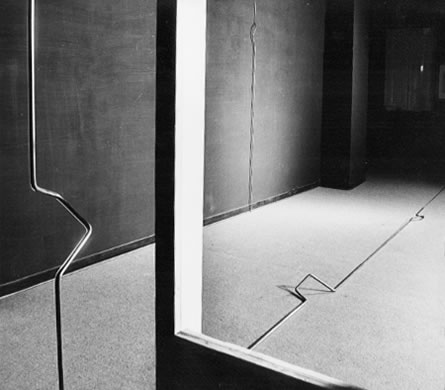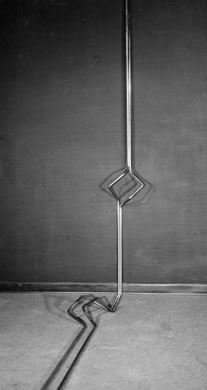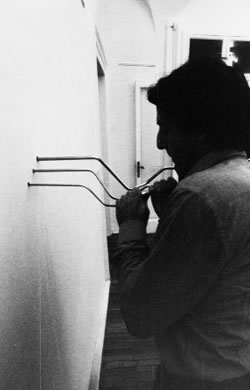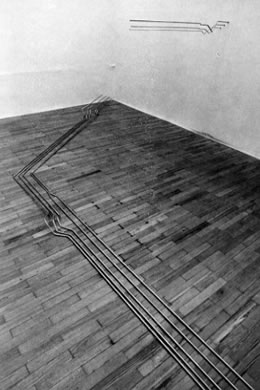|
[...] Antico proceeds according to the hypothesis of the emotional activation of space by lines of light-matter (stainless steel). His sculpture is typically a sign in space; sign, however, that the spatial-environmental dimension (the living space, i.e., interior, in particular) implies wholeness. The question is not of a sort of graphic episode that happens in space: it is exactly a taking of possession of the environmental existential space by a light-sign that outlines a dimensional circumstance, which is appropriated through coordinates that are as short as possible.
The recent direction his sculpture is taking is very significant: from the definition of a graphic nature in his sculpting, (but a drawing that is closed within a given style of writing space (even with significant formalistic calibration, I would say), to these brand new elaborations, formulated between 1974 and 1975, in which the implication is no longer abstract, but factual, it is empirical, and the idea of the sculpture is indeed a sign, an emotionally active sign in the existential space, and not in a mere mental space, the sign-form closed within its abstract and even slender elegance. Antico's three-dimensional graphics which is active in the space, winds here and there in a concrete sign, distinct, timely, and fascinating in its being very nearly the physical presence of a design concept of activity in the empirical space: almost like those tubular castles that physically prepare for the immensity of future buildings, and they visually "feel", so that the thin tubes of stainless steel that Antico connects are structural hypotheses put forth in real space in the immediacy of the response of a project idea. And in this way the design-object circuit is closed, and made active. [...]
Enrico Crispolti
1975
|








